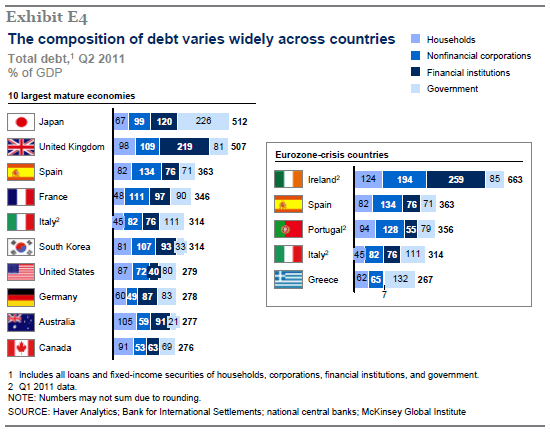
Finally, we have a high profile Australian – former BHP Billiton chairman and NAB chief executive, Don Argus – talking sense on Australia’s high private debt and how it is a millstone on Australia’s future productivity. From the Australian:
Australia was set to inherit the same challenges confronting stricken economies elsewhere in the developed world; there was “Ponzi financing” of debt in the global economy; and if the crippling cost rises striking resources projects continued, “our so-called boom will finish sooner than we think”…
“There is a big difference between borrowing money for infrastructure spending that will benefit our children, and borrowing money to spend on ourselves today with no future benefits,” he said.
Even after accounting for the Reserve Bank’s cuts, more household income was being used to service debt, constraining the ability of the government to tax households more to plug the gaps in the budget.
The gross national debt of households, businesses and governments had roughly doubled since 2005, with federal and state gross debt now at $500bn, consumer debt at $1.6 trillion and business debt at about $800bn.
“What do high debt levels mean for our future?” Mr Argus said.
“At best it portends a long period of low growth for Australia. As you rack up debt you are bringing forward consumption. In order to pay back debt, you must forfeit spending”…
Mr Argus said comparing Australia’s finances to those of other countries could overlook the fact that “things can deteriorate quickly both because of bad luck and bad policy design”.
Too right. While Australia’s overall national debt is middle-of-the-road amongst advanced economies, its household debt levels are amongst the highest, according to McKinsey Global Research (see next chart). Moreover, the bulk of Australia’s debt has been used for unproductive speculation on pre-existing housing, rather than on ventures that would enhance Australia’s future productive potential and living standards, such as infrastructure investment.

While Australia’s high private debt has not posed a major issue during the biggest commodity price and mining investment boom in the nation’s history, it leaves Australia vulnerable as commodity prices (national incomes) decline, mining capex falls, and unemployment rises.

